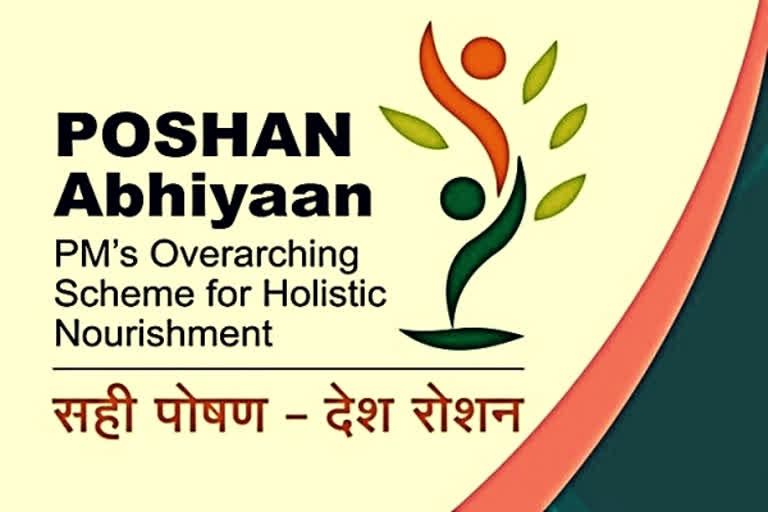Hyderabad: The most common problem in the implementation of government schemes is the lack of funds. Though there is enough money, the lack of willingness to spend the allocated funds can only be construed as apathy by the implementing authorities.
This has become the subject of controversy after the Union Ministry of Women and Child Development (WCD) recently urged the respective States to implement the central government scheme "Poshan Abhiyaan" on a war foot basis and utilise the funds to the fullest saturation. Union minister Smirti Irani expressed her grievance that the States are lagging in achieving the specified objectives of this welfare scheme, which mirrors the seriousness of the situation.
The Poshan Abhiyaan Scheme is being implemented just only for the namesake and the states of like West Bengal, Haryana, Punjab, Kerala, Odisha, and Goa are way behind. The Centre has so far allocated Rs. 3,769 crores, but only Rs. 1,058 crores (33 percent) have been spent. The scheme was not even implemented in West Bengal, Odisha, and Goa. Only one percent of the funds have been utilized in the states of Karnataka and Punjab, whereas in Haryana and Kerala the fund's utilisation stands at less than 10 per cent.
The Trinamool Congress Government in West Bengal which has serious differences with the Centre has not even considered the scheme. The state minister Mr. Sasi Panja explained the reason for the non-implementation and said that the state nutrition scheme is more comprehensive than the central scheme. A more or less similar situation prevails in Goa state run by BJP. Concerned officer of the Goa government, Deepali Nayak has expressed that lack of required field staff is the major drawback for implementation of the scheme. The situation of Punjab is somewhat better when compared to the other states. Several surveys made it clear that at the present pace of the scheme will certainly fall behind.
The International Medical Journal Lancet's survey clearly warned that India may not achieve the targets of Poshan Abhiyaan by 2022, if it fails to control- undergrowth, malnutrition, Anemia in women and children. The Indian Medical Research Council has expressed a similar opinion. The problems related to the insufficient nutritional supply are still raging in all of the states even though there are several nutritional programs for infants, lactating children, and pregnant women.
The Poshan Abhiyaan Program was launched in 2018 to achieve synergy between all these nutritional schemes. It is meant to run on a unified basis among several ministries. The main objective is to eradicate the malnutrition problem by the end of 2022 by utilizing the services of the Anganwadi centers.
NITI Aayog has set the target for all of the states to reduce the growth deficit by two percent, weight loss by two percent, Anemia by three percent and low birth weight by two percent, every year with the help of this scheme. When the NITI Aayog surveyed in 27 aspirational districts they got shocking results as 78 per cent of pregnant and breastfeeding mothers were enrolled in Anganwadi and only 46 percent had access to nutrient-dense food.
Under the Prime Minister's Matru Vandana Yojana, food items should be provided for 25 days, but practically they are being supplied only for half of the days of the set target. The central government aimed to digitalize all of the Anganwadi centers by 2021. They also planned to know the actual status of the implementation of Poshan Abhiyaan with the use of smartphones. Statistics show that only 4, 84,901 Anganwadis in 285 districts of 26 states have access to digital technology where beneficiaries' information is being recorded constantly.
Only 27.6 per cent of centers have smartphones and out of 14 lakh Anganwadi centers in the nation only 35 centers have height measuring machines, growth calculating operates and weighing machines. About 6.28 lakh smartphones were procured for Anganwadi centers and soon 4.95 lakh more smartphones will be included too.
NITI Aayog also found that the health-related information of the mothers and children has not been properly recorded, smartphones are not being utilised fully and also the accuracy of the information recorded on real ground conditions has not been tested yet.
Central Government also identified fake beneficiaries operating under Poshan Abhiyaan Scheme. NITI Aayog also pointed out that there is insufficient staff for the implementation of many women and children welfare programs and surprisingly, there are still 25 per cent vacancies for the posts of project directors and women supervisors.
We must take the facts into consideration and question ourselves- How this scheme can be implemented successfully with all these flaws? Primarily, the inadequate utilisation of funds needs to be addressed and public awareness needs to be promoted. If we can do this ideally, we can supply nutritional food to the right population. If we want to achieve the set target in time, we must enhance the pace of the Poshan Abhiyaan implementation. It is to be firmly noted that with the malnourished future generation we cannot build a strong nation.



